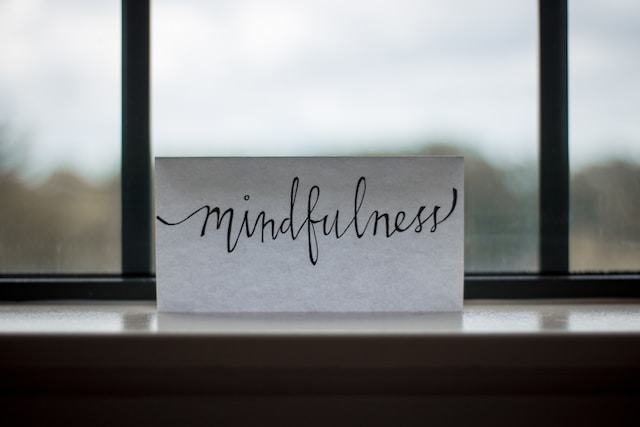What is mindfulness? It is being aware of daily behaviors that have become automatic; being fully present and observing without judgment. Mindfulness also is attending to each new moment, not getting attached to the past or grabbing for the future. We are constantly taking in information and so much of this is done unconsciously. When we are practicing mindfulness, we’re intentionally tuning up the dial of our awareness of the present moment.
It can be overwhelming when your therapist tells you that you need to do more mindfulness and incorporate it into your daily routine. Mindfulness is such a broad concept and it feels like everything and anything can be mindfulness. That can be helpful when trying to figure out what mindfulness is, but less so when you’re actually trying to practice it.
There are a lot of benefits of practicing mindfulness and not just getting your therapist off your back about doing it. It can reduce pain and suffering while increasing happiness and contentment. It can help with stress reduction or anxiety. Mindfulness helps with gaining better control of your mind and stop feeling like your mind is controlling you. It can also help you live with your eyes wide open and experience reality as it is. It brings attention to your essential goodness and validity.

So how do you practice mindfulness? Mindfulness can be done anywhere, at any time. Since we’re turning up the awareness dial, it can be as simple as being aware of your thoughts, feelings, and sensations while brushing your teeth or folding the laundry. Mindfulness can also be meditation, prayer, or mindful movement. What makes it mindfulness is focusing on body sensations, thoughts, and emotions; either for a pre-set amount of time or however long it takes to complete the task at hand.
What most people think of when they think of mindfulness practice is meditation. Just like with mindfulness, there are a ton of different mediations out there. If you were to search for mindfulness meditations, over 100,000,000 results will come up. This can just add on to overwhelming feelings you might have when told to add mindfulness into your daily routine.
Here are a couple of mindfulness meditations that can help ease you into the practice.
 Stone flake on a lake is a classic DBT meditation where you imagine that you are a stone flake that has been tossed out onto a lake and is slowly floating down to the lake floor. Noticing the sensations of floating in the cool, calm water until you gently reach the soft sandy bottom. As you reach the bottom of the lake, allow your attention to center in yourself. This specific meditation is often used to channel Wise Mind.
Stone flake on a lake is a classic DBT meditation where you imagine that you are a stone flake that has been tossed out onto a lake and is slowly floating down to the lake floor. Noticing the sensations of floating in the cool, calm water until you gently reach the soft sandy bottom. As you reach the bottom of the lake, allow your attention to center in yourself. This specific meditation is often used to channel Wise Mind.
Another common meditation is to imagine that you are sitting next to a flowing stream and there are leaves falling down from the trees and landing in the water. Imagine placing each thought on its own leaf and then watching the leaves float down the stream, until they are out of view.
This meditation can help you become more mindful of current thoughts and observing the thoughts while not letting them get stuck.
If you need a little more support there are apps that have guided and unguided meditations. These are just a couple of mindfulness meditation apps.
About the Author
Robyn Williams (she/her), M.A., LPC is a Licensed Professional Counselor who specializes in dialectical behavior therapy. Robyn works with teens and adults in a compassionate judgment-free manner to meet clients where they are in life. Robyn helps her clients develop the tools they need in order to live their life worth living, and find what means most to them. Robyn believes that while therapy can be intimidating at times, it can be a conduit for personal growth. Click here to learn more about Robyn’s experience and therapeutic approach.

